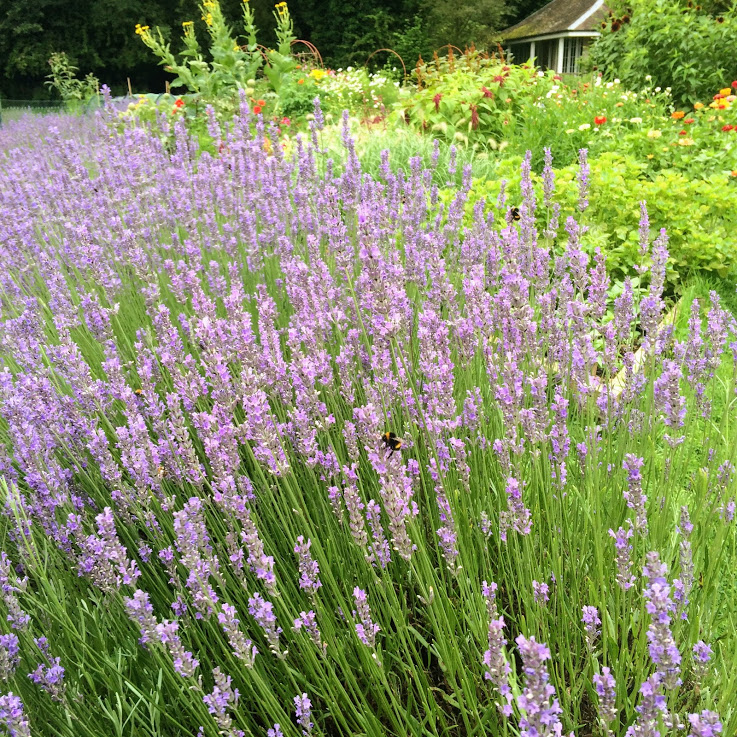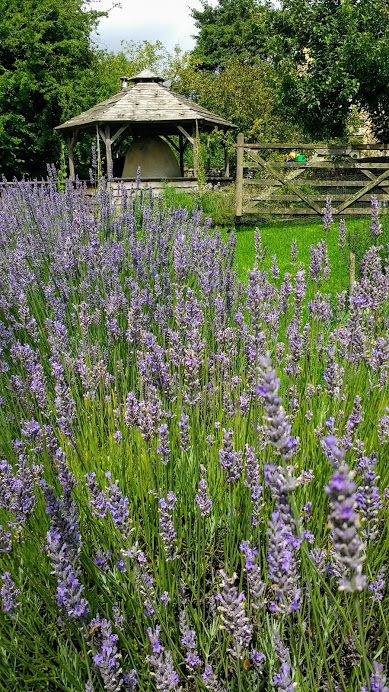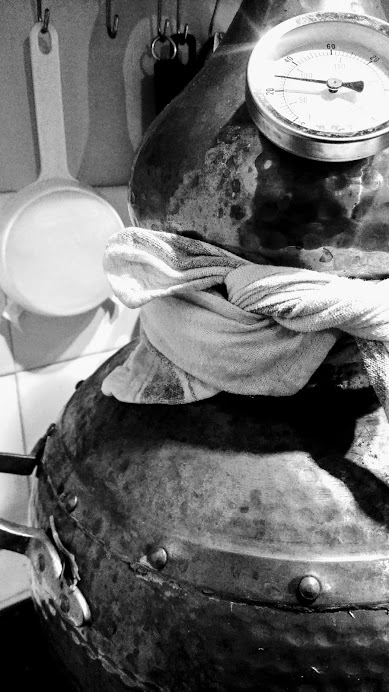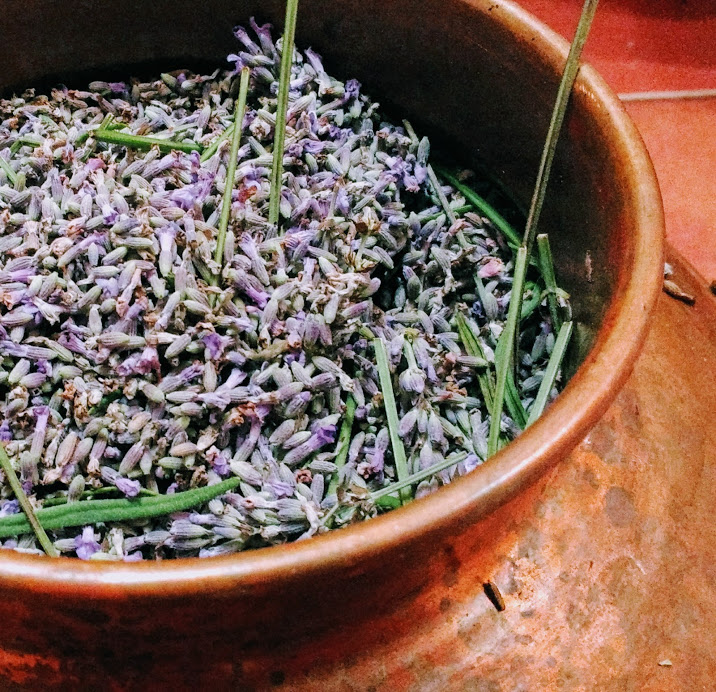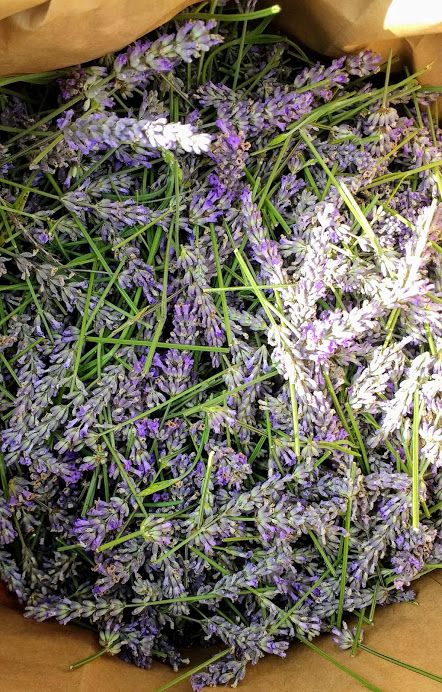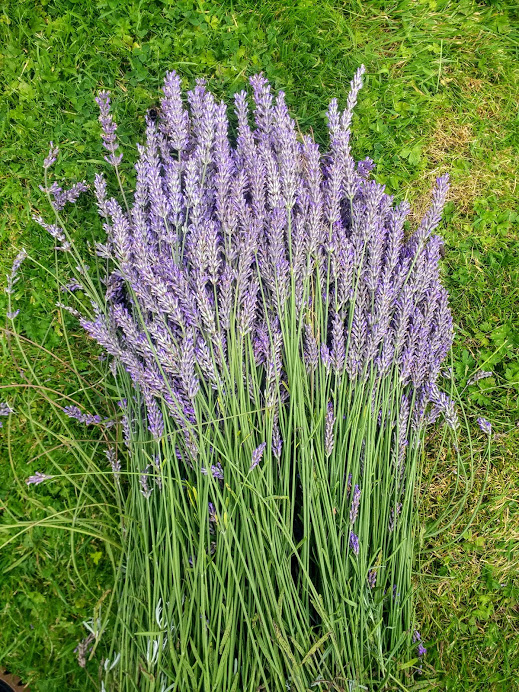Lavender Distillation 2019 - Lost in a Purple Haze
guest post with Emily Thomas
This week we have something a little different to usual on the blog, with a guest post written and photos caught on camera by one of our fantastic garden team of two, Emily Thomas. She distills the lavender grown in the garden every year, and here is her update on our 2019 distillation day.
“Lavender Distillation: Happily Lost in a Purple Haze
We have an abundance of lavender in the garden at Shipton Mill. We interplant it with rosemary as they make such cordial bed fellows and it lines the sunny edges of our herb gardens and vegetable patches. At its flowering zenith the plants are abuzz with pollinators; several species of bumble bees, honey bees, hoverflies, butterflies, all gather peaceably around the fragrant spires, flitting from one plant to the next. As a plant I feel it brings so much to the garden, without it the main garden would feel very different.
We like to prune the lavender promptly after flowering as we are in a bit of a frost pocket and early pruning gives the lavender time to put on new growth before the cold weather sets in. A few years ago I started distilling our pruned lavender to make essential oil and hydrosol (flower water), which is a by-product of the distilling process. We bought a handmade copper still and have over the years tweaked and adjusted the process so it now all flows quite smoothly from plant to bottle… although theres always more to learn!
It is best to use the lavender heads when they are just starting to open up as the energy and oils of the plant will be mostly in the flowering, but my priority being to the bees I usually wait a week or two and stagger the pruning so there is always plenty of food to be had. The pruning is quite a job but done on sunny days in stages its a joy to do. Every year I’m amazed how amiable the bees are at my interruptions and despite the numbers I’ve never been stung pruning lavender. I suspect it may be the plant’s calming influence on all of us.
The distillation process is quite simple. The plant material goes into the the main chamber or bowl of the still, it sits on top of a stainless steel steamer which sits just shy of spring water poured into the bottom of the bowl. The bowl is put onto heat (my hob), and as steam generates it pushes up through the lavender, infusing itself as it percolates upward into a copper pipe which then travels though a cooling chamber (cold water), which causes the steam to condense. The solution is now a mix of essential oil picked up from the lavender and the ’hydrosol’ or condensed plant-distilled water; our lavender water. We are mostly familiar with rosewater, true rosewater is the hydrosol of a rose distillation.
Because oil evaporates at a lower temperature than water it mostly exits the still before the hydrosol but using a fairly rudimentary still this isn’t always the case so I collect the mixture of oil and water into one container until the distillation is finished and then carefully separate the two liquids. I use the hydrosol as a skin toner for my face, in baths, as a spritz for my bed sheets and also for spritzing when ironing.
The oil from our lavender is different to french lavender essential oil which is mostly available in our shops. It very much carries the essence of its surroundings, of a verdant Cotswold garden with water and earth as its defining elements rather than sun and air, as I imagine the bright lavender fields of Provence. But I like its earthy quality, its more grounding and still carries the beautiful high note we know of lavender and all of her medicinal qualities. Mid August for me seems to pass in a dreamy lavender haze.
As plants go, lavender has quite a high portion of volatile oil, however, from all our plants each year I collect on average 150ml of essential oil, and lots of hydrosol. For this quantity of harvest it is definitely best described as a labour of love! But I do love it. The lavender gets preserved for us to enjoy its essence through the year, all the prunings get used – the flower heads for distilling and the stalks as a mulch for our cut flower beds, and I get to hang out at close quarters with the bees in the sun for a few glorious days. The still gets used for other plants too, lemon balm, rose, peppermint, rosemary, chamomile, but they are less generous with their oils. For me, lavender is the queen for distilling, but if you’re trying it at home, open those windows while you’re at it!
Emily Xx”
